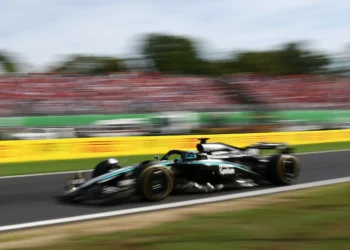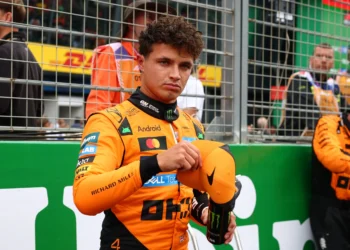Red Bull Racing is set to ignite the Formula 1 scene in 2026 with a groundbreaking twist as they venture into the realm of self-produced engines. This audacious move has experts divided, but former McLaren star Juan Pablo Montoya boldly predicts a “surprise” from the team that has dominated in recent years. The stakes are high, and the racing world is watching closely!
Christian Horner, the recently departed Red Bull team principal, may have voiced concerns about the potential embarrassment for rival manufacturers if Red Bull’s new power unit outshines the competition right out of the gate. However, Montoya remains optimistic, asserting that Red Bull’s newly established Powertrains division, in collaboration with American automotive giant Ford, could very well churn out a formidable engine for the upcoming season.
As the team bids farewell to current supplier Honda, which is shifting its focus to Aston Martin, Red Bull’s RBPT-Ford will go head-to-head against renowned powerhouses like Mercedes, Ferrari, and Honda, while also fending off the new kids on the block—Audi F1, who are set to rebrand the existing Sauber team.
In a shocking revelation from April, it was reported that only one engine manufacturer, speculated to be Mercedes, is in a solid position for the 2026 season, while others are lagging behind in their development. Two manufacturers are reportedly “a long way behind,” with yet another grappling with an underperforming engine after opting for an unconventional biofuel approach, unlike its rivals who have chosen synthetic fuel.
Mercedes has long been the dominant force in F1, boasting a record of eight consecutive Constructors’ titles following major engine rule changes in 2014. With Red Bull’s ambitious plans, Montoya is confident that their recruitment of top talents from Mercedes and Ferrari will lead to a competitive edge for Max Verstappen’s engine next season. Yet, he warns that the absence of legendary designer Adrian Newey, who has left for Aston Martin, could hinder their preparations for this new era of F1 racing.
Montoya expressed his thoughts candidly, stating, “On the engine side, Red Bull have the right people. The real question is whether they can pull it all together in time.” He believes the team’s wealth of information could allow them to “surprise people” with their power unit, but he also cautions that the current shift in leadership dynamics—with several key figures, including Horner and Newey, stepping away—could impact their performance.
“Now everybody’s coming with new ideas, and at the end of the day, the guy leading the direction is a different guy. What does Red Bull do now? You’re putting really good people in charge, but they lack experience in leadership roles. It’s going to take three or four years for them to regain their former dominance,” Montoya added, drawing parallels to business transitions in companies like Adidas.
In what turned out to be Horner’s final race as team principal at Silverstone, he candidly acknowledged that Red Bull’s engine division represents “by far the biggest challenge” the team has faced since entering the sport in 2005. Despite his concerns, he emphasized the long-term competitive benefits of having an in-house engine facility.
“Things go in cycles, and sport goes in cycles,” Horner stated. “We’ve had two incredibly successful cycles in Formula 1, and we want to build towards the next one. While we aim for Max to lead us, we recognize the immense pressure that comes with being a new power unit manufacturer.”
As the countdown to 2026 continues, the racing fraternity is abuzz with speculation and anticipation. Will Red Bull rise to the occasion, or will they falter in the face of established giants? One thing is certain: the upcoming season promises to be nothing short of electrifying, as Red Bull Racing prepares to unleash their power unit and take the fight to their rivals!










